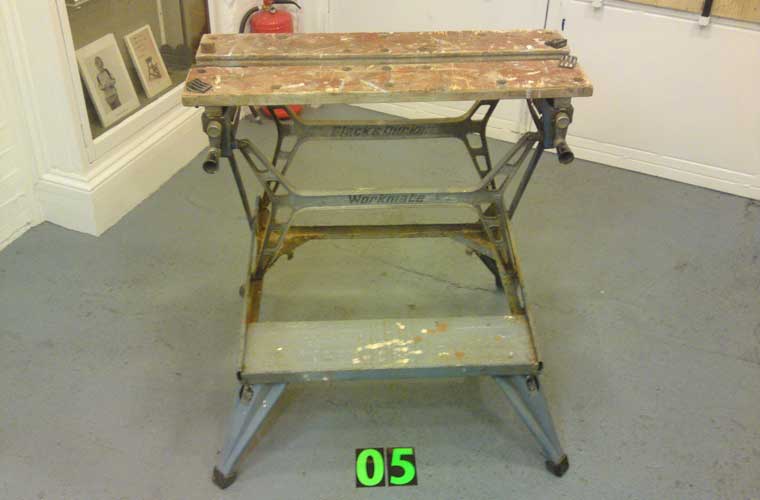Ever wondered how the famous Workmate workbench came about?
It was originally invented in 1962 by a man named Ron Hickman.
Ron Hickman
Ron Hickman was an inventor and was born in South Africa in 1932. In the 1950s, he left and headed for London, where he worked for various companies designing cars. He worked for Ford Motor Company first where he started out as a clay modeller and later helped style the Ford Anglia. He then moved on to work for Lotus Engineering where he had a hand in designing race cars like the first Lotus Europa.
An idea was born
In 1961, Hickman set out to invent a better workbench after sawing a chair in half. Hickman was hard at work building a wardrobe for the home he shared with his wife. He couldn’t find a workbench that he liked, so he improvised by using two Swedish wooden chairs as a makeshift workbench and sawhorse. He was so focused on making a straight cut through some wood with his saw that he cut right through the wood and into one of the chairs.
It was this incident that changed his life. Instead of cursing the fact that no workbench existed with a bench vise that could have helped him avoid this situation, he set out to design one himself.
From the very beginning, Hickman was not setting out to make a typical professional workbench. What Hickman set out to do was to make something completely different. He wanted something lightweight and portable that could adjust to a variety of jobs.
Eventually, the Workmate workbench was born and, over the next several years, evolved into a version of the Workmate that we would recognize today.
Hard beginning
Hickman was initially rejected by a lot of companies including the likes of Black & Decker, Stanley Tools, Spear & Jackson and Wikinson, who told him there was no market for something like, noting that no one would want to carry such a large tool.
Change of tactics
Having been rejected by various companies to develop his work bench, Hickman decided he had to change his approach. So he took it upon himself and decided to try sell his invention and trade shows.
His first break came in 1968 when he convinced a DIY magazine to let him exhibit at the Ideal Homes Exhibition in London. From there, he managed to sell 1,800 within a year.
It wasn’t until 1971 when eventually, Black & Decker changed their mind, and saw a future for the bench. They began to work with him to improve his initial design, and in 1972 it went in to mass production. Black & Decker’s MKII version of the Workmate first hit market in the UK where it was sold for £24.95.

Worldwide success
The Black & Decker Workmate was soon rolled out across Europe and the majority of the rest of the world, with the exclusion of the Americas, Australia and Japan. After hesitation about the success, North America finally launched the product 1975, and since, there have been more than 30 million sold worldwide.
Having proved successful, Hickman had successfully defended his patents in court many times because a lot of companies tried to infringe on his design. Considering that he was once told his design wouldn’t sell, you can see just how influential it was by the amount of people who tried to copy it.
The perfect portable workbench
What is it about the Workmate workbench that makes it so special? It’s something that, once you start using it, you’ll wonder how you ever lived without it. It’s a lightweight portable, foldable combination of a sawhorse, workbench, and vise that serves as a multipurpose work station. It has an adjustable height and the vice can grab squared objects as well as irregularly shaped ones.
When using it, you can access your work from all sides and it’s easy to pick up and move it to wherever you need it to be. When not in use, it can be folded flat, carried like a large briefcase, and stored on a hook. The version available today weighs only twenty-six pounds and can hold up to 550 pounds. All this and it’s exceptionally affordable, selling at around $100. Check out one of the commercials from Black & Decker below:
Success
Ron Hickman was inspired to create the Workmate Workbench after he destroyed a chair. What he developed has since gone on to inspire more than thirty million carpenters, contractors, DIYers, and anyone else who has ever used a Black & Decker Workmate.
Reader Interactions